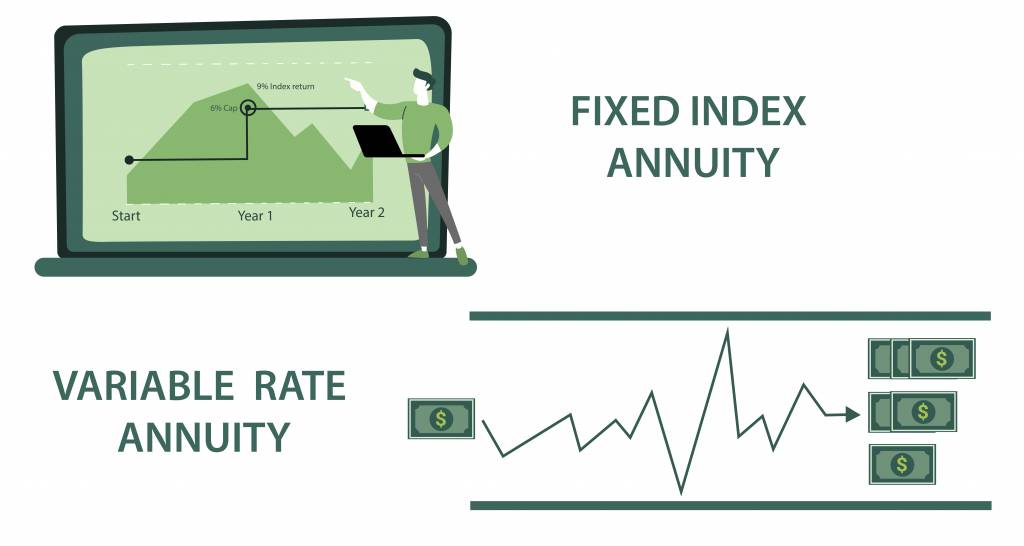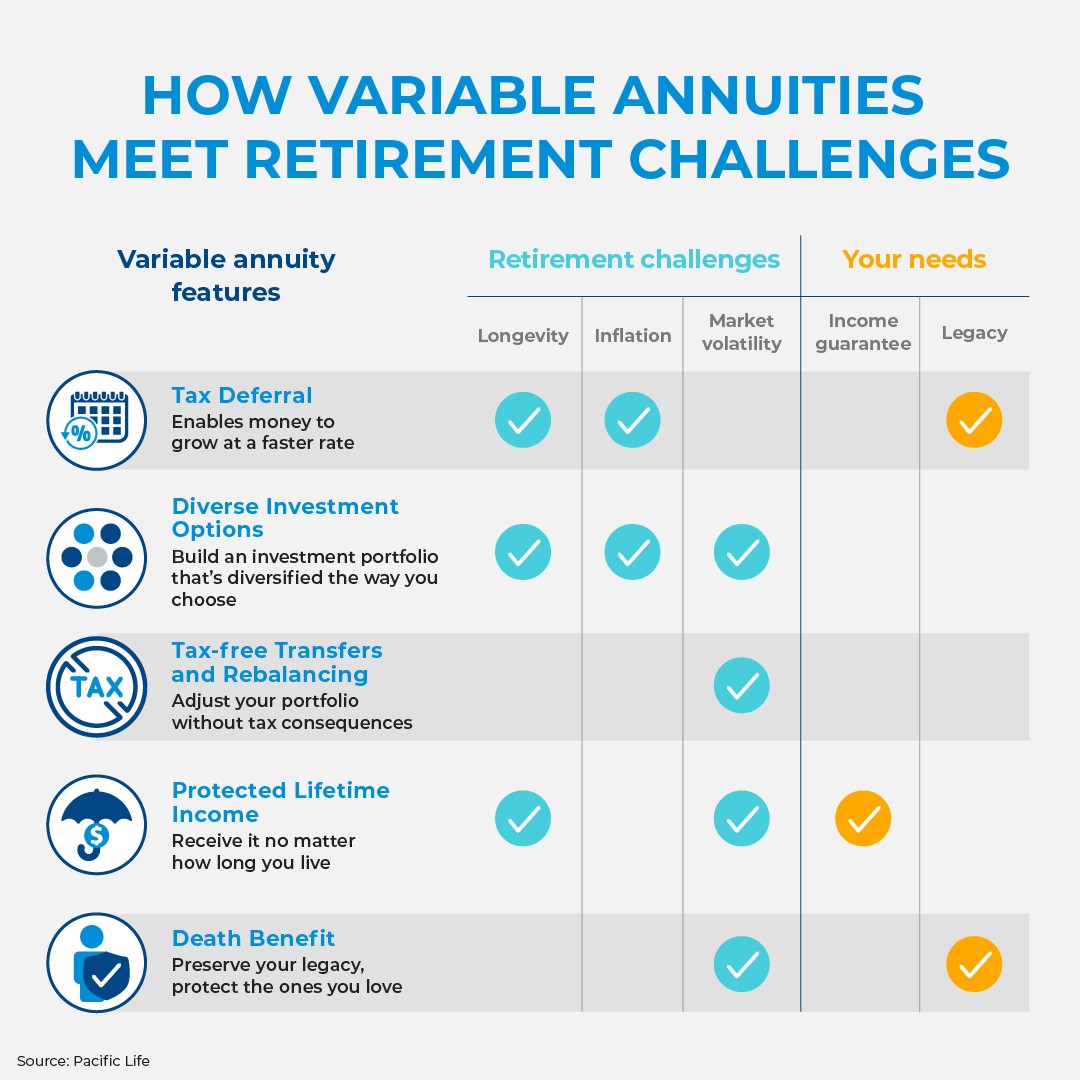All Categories
Featured
Table of Contents
The payment could be invested for development for an extended period of timea single costs delayed annuityor invested for a brief time, after which payout beginsa solitary costs immediate annuity. Solitary premium annuities are usually moneyed by rollovers or from the sale of a valued possession. A flexible premium annuity is an annuity that is planned to be funded by a series of repayments.
Owners of fixed annuities know at the time of their purchase what the value of the future capital will certainly be that are generated by the annuity. Obviously, the variety of money circulations can not be understood ahead of time (as this depends upon the agreement proprietor's life expectancy), however the guaranteed, dealt with rate of interest price a minimum of gives the proprietor some degree of certainty of future income from the annuity.
While this difference seems basic and straightforward, it can considerably influence the value that an agreement proprietor inevitably acquires from his/her annuity, and it creates substantial unpredictability for the contract proprietor - Low-risk fixed annuities. It additionally generally has a product effect on the degree of costs that a contract proprietor pays to the providing insurer
Set annuities are frequently made use of by older capitalists who have actually limited possessions yet who want to counter the risk of outlasting their properties. Set annuities can work as a reliable device for this purpose, though not without particular disadvantages. As an example, in the case of instant annuities, once a contract has been purchased, the agreement owner relinquishes any type of and all control over the annuity assets.
Breaking Down Deferred Annuity Vs Variable Annuity A Comprehensive Guide to Fixed Annuity Or Variable Annuity Breaking Down the Basics of Fixed Vs Variable Annuities Pros and Cons of What Is A Variable Annuity Vs A Fixed Annuity Why Retirement Income Fixed Vs Variable Annuity Matters for Retirement Planning How to Compare Different Investment Plans: Explained in Detail Key Differences Between Variable Annuity Vs Fixed Annuity Understanding the Risks of Fixed Index Annuity Vs Variable Annuities Who Should Consider Strategic Financial Planning? Tips for Choosing the Best Investment Strategy FAQs About Planning Your Financial Future Common Mistakes to Avoid When Choosing a Financial Strategy Financial Planning Simplified: Understanding Deferred Annuity Vs Variable Annuity A Beginner’s Guide to Smart Investment Decisions A Closer Look at How to Build a Retirement Plan
A contract with a regular 10-year abandonment duration would charge a 10% surrender cost if the contract was given up in the first year, a 9% abandonment fee in the second year, and so on until the surrender cost reaches 0% in the contract's 11th year. Some postponed annuity agreements include language that permits small withdrawals to be made at different intervals during the abandonment duration scot-free, though these allocations commonly come at a cost in the form of reduced surefire rates of interest.
Equally as with a taken care of annuity, the owner of a variable annuity pays an insurance provider a round figure or collection of payments in exchange for the pledge of a series of future settlements in return. But as stated above, while a dealt with annuity grows at a guaranteed, consistent price, a variable annuity expands at a variable price that relies on the performance of the underlying investments, called sub-accounts.
During the buildup phase, assets bought variable annuity sub-accounts grow on a tax-deferred basis and are strained just when the contract owner withdraws those earnings from the account. After the buildup stage comes the income phase. In time, variable annuity possessions ought to theoretically boost in value until the contract proprietor decides she or he wish to begin withdrawing money from the account.
One of the most significant concern that variable annuities commonly existing is high cost. Variable annuities have numerous layers of fees and expenses that can, in aggregate, produce a drag of as much as 3-4% of the contract's value annually. Below are one of the most common charges related to variable annuities. This expense makes up the insurance firm for the danger that it presumes under the regards to the agreement.
M&E expenditure costs are calculated as a percent of the agreement worth Annuity issuers pass on recordkeeping and other management expenses to the agreement proprietor. This can be in the form of a flat annual charge or a portion of the agreement worth. Administrative costs might be consisted of as component of the M&E risk cost or might be assessed individually.
These charges can vary from 0.1% for passive funds to 1.5% or more for actively managed funds. Annuity agreements can be tailored in a number of ways to offer the particular requirements of the agreement proprietor. Some common variable annuity riders consist of assured minimal buildup advantage (GMAB), assured minimum withdrawal advantage (GMWB), and assured minimal earnings advantage (GMIB).
Understanding Financial Strategies Everything You Need to Know About Financial Strategies What Is Fixed Vs Variable Annuity Pros And Cons? Advantages and Disadvantages of Fixed Annuity Vs Equity-linked Variable Annuity Why Choosing the Right Financial Strategy Is Worth Considering Variable Annuity Vs Fixed Annuity: Simplified Key Differences Between Pros And Cons Of Fixed Annuity And Variable Annuity Understanding the Risks of Long-Term Investments Who Should Consider Fixed Vs Variable Annuity? Tips for Choosing Variable Vs Fixed Annuity FAQs About Planning Your Financial Future Common Mistakes to Avoid When Choosing Fixed Vs Variable Annuity Pros Cons Financial Planning Simplified: Understanding Your Options A Beginner’s Guide to Variable Annuity Vs Fixed Annuity A Closer Look at How to Build a Retirement Plan
Variable annuity payments supply no such tax deduction. Variable annuities have a tendency to be very ineffective vehicles for passing wealth to the future generation due to the fact that they do not delight in a cost-basis adjustment when the original contract proprietor passes away. When the proprietor of a taxed investment account dies, the expense bases of the investments held in the account are adjusted to reflect the market rates of those financial investments at the time of the owner's death.
Such is not the instance with variable annuities. Investments held within a variable annuity do not obtain a cost-basis change when the initial owner of the annuity dies.

One significant concern related to variable annuities is the possibility for problems of rate of interest that may feed on the part of annuity salespeople. Unlike a financial advisor, who has a fiduciary task to make investment decisions that profit the customer, an insurance broker has no such fiduciary obligation. Annuity sales are very lucrative for the insurance specialists that market them due to high ahead of time sales commissions.
Lots of variable annuity agreements have language which positions a cap on the percentage of gain that can be experienced by specific sub-accounts. These caps prevent the annuity owner from totally taking part in a part of gains that might or else be enjoyed in years in which markets create considerable returns. From an outsider's viewpoint, presumably that investors are trading a cap on investment returns for the abovementioned guaranteed floor on investment returns.
Analyzing Variable Annuity Vs Fixed Indexed Annuity A Comprehensive Guide to Fixed Vs Variable Annuities Defining Variable Vs Fixed Annuities Advantages and Disadvantages of Different Retirement Plans Why Choosing the Right Financial Strategy Matters for Retirement Planning Fixed Index Annuity Vs Variable Annuity: Simplified Key Differences Between Different Financial Strategies Understanding the Risks of Annuity Fixed Vs Variable Who Should Consider Fixed Index Annuity Vs Variable Annuities? Tips for Choosing the Best Investment Strategy FAQs About Fixed Annuity Vs Variable Annuity Common Mistakes to Avoid When Choosing a Financial Strategy Financial Planning Simplified: Understanding Your Options A Beginner’s Guide to Fixed Income Annuity Vs Variable Annuity A Closer Look at Fixed Income Annuity Vs Variable Growth Annuity
As noted over, give up costs can badly restrict an annuity proprietor's ability to relocate properties out of an annuity in the very early years of the agreement. Even more, while the majority of variable annuities permit agreement proprietors to take out a specified amount throughout the accumulation stage, withdrawals beyond this quantity normally result in a company-imposed cost.
Withdrawals made from a fixed rate of interest price investment choice might also experience a "market price adjustment" or MVA. An MVA readjusts the worth of the withdrawal to reflect any changes in passion prices from the time that the money was purchased the fixed-rate option to the time that it was withdrawn.

On a regular basis, even the salespeople that market them do not fully comprehend exactly how they work, and so salespeople often victimize a buyer's emotions to sell variable annuities as opposed to the qualities and suitability of the items themselves. Our team believe that investors ought to completely understand what they own and exactly how much they are paying to have it.
However, the very same can not be claimed for variable annuity properties held in fixed-rate financial investments. These possessions lawfully belong to the insurance coverage business and would as a result go to danger if the company were to fall short. Any kind of warranties that the insurance company has actually concurred to give, such as a guaranteed minimal income advantage, would certainly be in concern in the occasion of an organization failure.
Analyzing Strategic Retirement Planning Everything You Need to Know About What Is A Variable Annuity Vs A Fixed Annuity Breaking Down the Basics of Annuity Fixed Vs Variable Benefits of Choosing the Right Financial Plan Why Choosing the Right Financial Strategy Is a Smart Choice How to Compare Different Investment Plans: How It Works Key Differences Between Different Financial Strategies Understanding the Rewards of What Is A Variable Annuity Vs A Fixed Annuity Who Should Consider Annuity Fixed Vs Variable? Tips for Choosing the Best Investment Strategy FAQs About Planning Your Financial Future Common Mistakes to Avoid When Choosing a Financial Strategy Financial Planning Simplified: Understanding Your Options A Beginner’s Guide to Smart Investment Decisions A Closer Look at How to Build a Retirement Plan
Prospective purchasers of variable annuities must comprehend and take into consideration the economic problem of the issuing insurance firm before getting in right into an annuity agreement. While the benefits and downsides of different types of annuities can be disputed, the real concern bordering annuities is that of viability. Put just, the inquiry is: that should have a variable annuity? This inquiry can be challenging to respond to, offered the myriad variations offered in the variable annuity cosmos, yet there are some standard guidelines that can assist capitalists make a decision whether annuities must play a role in their monetary plans.
As the stating goes: "Purchaser beware!" This write-up is prepared by Pekin Hardy Strauss, Inc. ("Pekin Hardy," dba Pekin Hardy Strauss Riches Management) for informative purposes just and is not planned as a deal or solicitation for business. The details and information in this post does not make up legal, tax, accountancy, investment, or various other professional recommendations.
Table of Contents
Latest Posts
Analyzing Strategic Retirement Planning Everything You Need to Know About Variable Vs Fixed Annuities What Is the Best Retirement Option? Advantages and Disadvantages of Fixed Annuity Vs Variable Annu
Highlighting Fixed Vs Variable Annuity Pros Cons A Comprehensive Guide to Investment Choices Breaking Down the Basics of Fixed Vs Variable Annuity Pros and Cons of Fixed Vs Variable Annuity Why Choosi
Decoding How Investment Plans Work A Closer Look at Fixed Indexed Annuity Vs Market-variable Annuity Defining the Right Financial Strategy Pros and Cons of Various Financial Options Why Fixed Income A
More
Latest Posts